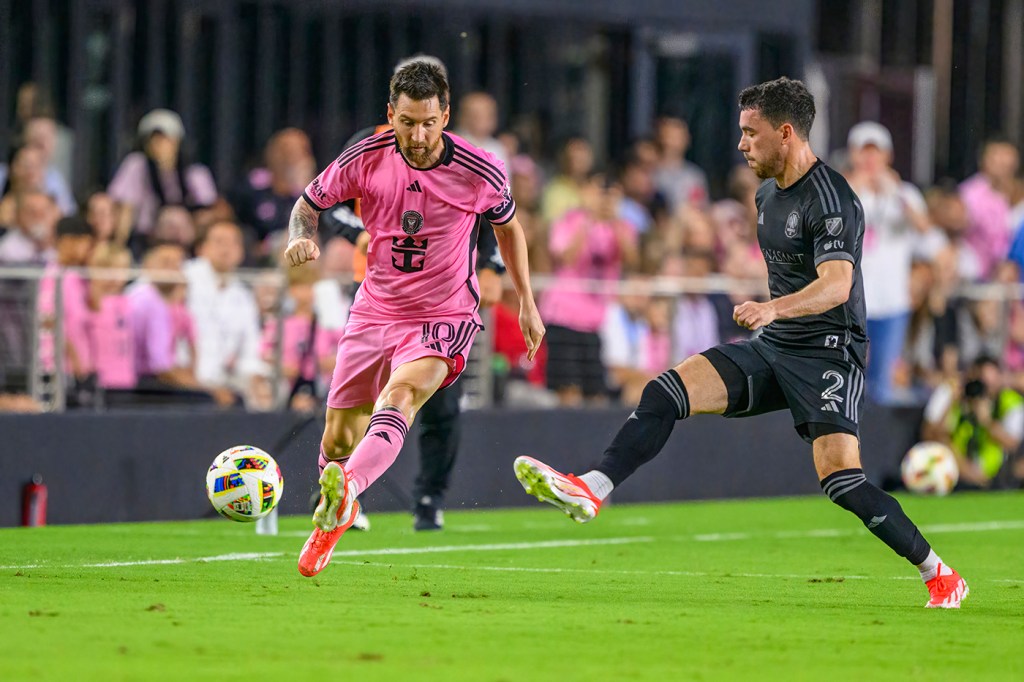What does soccer need to break through to Americans?
In the United States, soccer ranks a distant fourth in popularity and — despite seemingly every child under age 12 being on a team — the sport has failed to break into the American sports pantheon.

It’s “the world’s most popular sport,” with an international governing body overseeing 205 member associations with over 300,000 clubs and 240 million players. Then there are the billions of fans.
But in the United States, soccer ranks a distant fourth in popularity and — despite seemingly every child under age 12 being on a team — the sport has failed to break into the American sports pantheon.
Football (NFL), baseball (MLB) and basketball (NBA) have long been considered the top three pro sports and leagues in the U.S. And hockey (NHL) ranks fifth, according to a 2024 Gallup poll.
What does soccer need to break through to Americans?
A superstar, perhaps?
Christian Pulisic is the captain of the U.S. men’s national team and considered one of the country’s best players of all time, but you won’t find his name among the top players in the world. He’s ranked as high as 81st on some lists.
“I’ve seen many people write ‘what we need is a Yao Ming to come in,’” says Alan Klein, a professor emeritus of anthropology at Northeastern University who studies the intersection of culture, politics and sport.
“That ignores that China already had 300 million basketball players — Ming was not just out of the blue — the country had a strong grassroots and the ability to develop a superstar like that,” Klein says. “If we don’t have a long established root system, no superstar will ever change that.”
“I don’t know that a superstar can make a difference, and I think it’s a cultural phenomenon as far as I’m concerned,” Klein says.
‘Playing is solved at a youth and high school level’
Caleb Bondzi, a college student working on Northeastern’s Boston campus as a residential staff member this summer, was kicking soccer balls recently at Carter Playground.
He says star players bring more attention to the sport, but believes America’s soccer “problem” is that youth programs are “very much pay to play,” which means that “making it to a high level requires a comfortable socioeconomic background.”
“People watch more [soccer] with superstars, but playing is solved at a youth and high school level,” Bondzi says.
For the past 50 years, football (the American version) has been the most popular sport in the U.S. — with 41% of Americans saying in 2022 that it is their favorite sport to watch. An industry has thus built up around the sport, making the average NFL team worth a record $5.1 billion in 2023. Football has also become a cultural phenomenon spawning rivalries, traditions, the term “wardrobe malfunction,” and much, much more.
Then there is “the American pastime” of baseball — the cultural significance of which anybody on Northeastern’s Boston campus can attest — and the storied rivalries of basketball exemplified by Larry Bird vs. Magic Johnson, the cultural impact of Michael Jordan on everything from sneakers to underwear, and the collective expression of grief at the death of Kobe Bryant.
Featured Posts
But each of these sports play at their most elite levels in the United States, Klein notes.
Soccer’s most elite play happens internationally
And even when its dominant teams are American, as in the case of the U.S. Women’s World Cup teams, soccer’s most elite level of play happens internationally.
Major League Soccer, the top U.S. pro league formed in 1995, averages about 22,000 fans per game. That’s about half what European teams average. The median MLS salary is about $600,000, while European players make about $ 4 million — and oftentimes much more.
The U.S. men’s recent collapse in the Copa América also illustrates the difference in the level of international play versus games stateside. The U.S. team lost to Uruguay in group play in Copa, which will hold the championship game on July 14. The UEFA Europe Championship also takes place July 14.
“I used to enjoy going to a New England Revolution game, but I would never confuse what I saw on the Major League Soccer field with what’s going on in the English Premier League,” Klein said.
Plus, we’ve also already tried importing a superstar.
‘Baseball eventually might not be part of sport pantheon’
Klein notes that David Beckham’s foray with the Los Angeles Galaxy was not a breakthrough for the sport. And is Lionel Messi with Inter Miami really moving the needle with the general public or just with dedicated fans?
“It just means attendance is up temporarily and more licensed product is being sold,” Klein says of Messi’s Miami sojourn.
That being said, Klein notes that things could change.
“Baseball is declining and eventually might not be part of the sport pantheon,” Klein says. It has fallen out of favor and doesn’t reflect cultural values we see as important today while football does — it’s a power sport, emphasizing speed and power.
But football has its own looming crisis in the dangers of repeated concussions from the sport.
“The National Football League is like the tobacco industry,” Klein says. “They knew what’s going on and that it could be the death knell of the sport, but they want to suppress the information.”
Could soccer sneak into the top three? After all, the 2026 FIFA World Cup is coming to the United States, Canada and Mexico.
World Cup in the U.S. will have a huge impact on youth
Antonio Kuri, a fifth-year Northeastern student from Mexico, was walking across the Boston campus this week wearing an Argentinian soccer jersey. He says the World Cup being played in the U.S. will have a huge impact on younger generations, and will help solidify soccer in American sports.
“In 10 to 15 years, the U.S. team could be a top-10 team in the world, which would bring much more attention to the sport,” Kuri says.
But Klein says it will take time, and it “won’t be an individual, it will be people” who elevate the sport.
One big thing might have to change.
“It might help to stop calling it soccer,” Klein says. “That might be a start.”
Samantha Fortier of Northeastern Global News contributed to this story.











